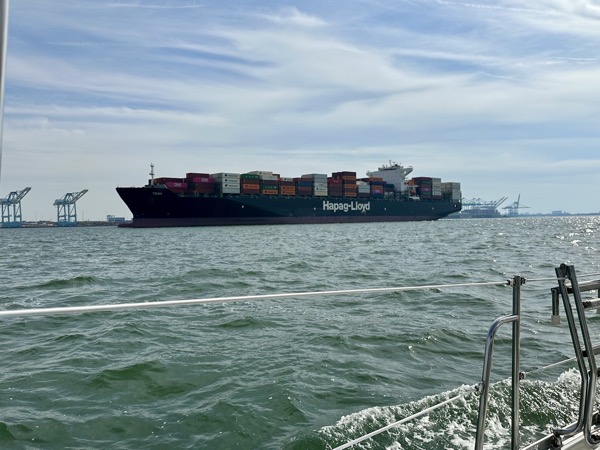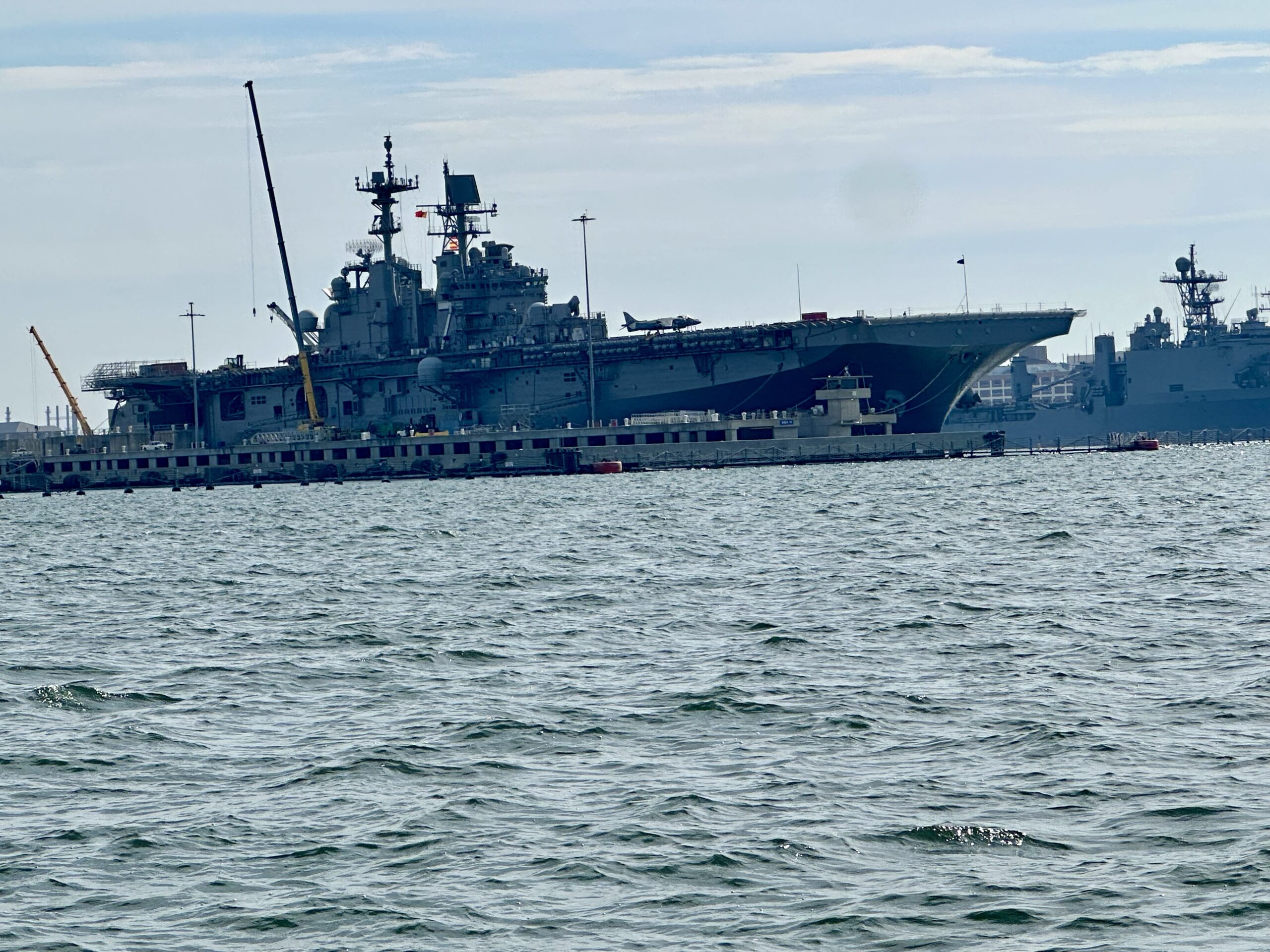After we said goodbye to Ben in Norfolk, it was time to continue south. Being that it was now November with the potential for storms and gales, we had decided to bypass Cape Hatteras, a famously nasty place known as the “Graveyard of the Atlantic”. We decided to take the inside route on the Intracoastal Waterway, aka the ICW, aka The Ditch.
The ICW is an amazing feat of engineering. It’s a series of canals, rivers, and inlets that run from Portsmouth/Norfolk VA all the way to Key West, FL. It is crossed with both fixed bridges and drawbridges and has a couple of locks. It was started in the 1790’s and parts of it were dug by slave labor, including those people enslaved by George Washington. It’s now maintained by the Army Corps of Engineers. It allows boaters and commercial vessels to go down the whole lower eastern seaboard without ever going into the ocean.
That being said, it also has some disadvantages. It can be quite shallow in places and our sailboat’s keel is 6 feet below the waterline. The fixed bridges are only 65 feet high. With our mast topping out at about 60 feet including the antenna, we shouldn’t have a problem, but many bigger sailboats can’t use the ICW because of the depth/height issue. Some of the drawbridges only open on a schedule so boats can get stuck waiting for bridges in some places. On top of that, it can be quite busy with vessel traffic and you have to be very alert to stay exactly in the channel to avoid running aground. Add to that floating and semisubmerged logs, old pilings, some currents, and lots of fast power boats, and it requires full attention. We are a slow sailboat compared to the power boats, so they were passing us constantly. We decided that we would only move during the daylight hours and not more than 6-8 hours per day so we could maintain our concentration, so it was slow going.
Neither of us were particularly excited about it, since there is essentially no sailing and we thought that you just motor along a ditch for hours a day. However, once we started, we found that it is actually quite interesting and fun, with some beautiful scenery, fun towns, and great people along the way!
The first section goes through Norfolk, VA, Portsmouth, VA, and the Hampton Roads. The Hampton Roads is one of the busiest shipping channels in the US, and besides a bustling commercial port, is the E coast home of the US Navy.
We were able to sail up a little of the lower Chesapeake Bay, then dropped sails and started the motor and entered the ICW. It starts quite wide, so we were able to stay out of the main shipping lanes, which was a good thing, since it was insanely busy there. As we turned the corner, we found ourselves in the middle of a bunch of tugboats and then a Coast Guard cutter called us on the radio to let us know that he would be passing us on the “wrong side”. We looked behind us and saw an aircraft carrier turning the corner behind us, so they were all waiting for it. We hurried up and beat feet to get out of their way.

Coast Guard Cutter saying hello
We passed multiple Navy ships under way and in port. I got that old Village People song “In the Navy” stuck in my head and couldn’t get it out for a couple of days.
We continued dodging big ships, little boats, and soaking up the scenery. At one point, a huge cargo ship backed out right in front of us, so we had to swerve around it.
 Big ship with tugboat, right in our way
Big ship with tugboat, right in our way

Another one. That’s why we stayed out of the main channel!
We spent about 3 hours navigating the busy harbor, then entered the ICW proper. The city and industrial port fairly quickly gave way to rural Virginia with swamps and the occasional small houses along the canal.
Aaah, more relaxing
It was quite a bit less busy, but we still had to be on our toes since the dredged channel is narrow and it was shallow on either side. We didn’t want to run aground and have to call for a Tow of Shame.
We made it that night to the small town of Chesapeake, VA where we went through the first locks. Just after the locks was a turning bascule bridge that opened only on a schedule. There are two free piers in Chesapeake where boaters can tie up for the night, one before the bridge and one after. We were hoping to tie up to the one after, since it was closer to town. However, some friendly power boaters zoomed through when the bridge opened and called back on the radio to tell us that the pier was full, so we stayed on the north side of the bridge and tied up to the other pier, where we were the only boat. It was in a state park, which commemorated the Battle of Great Bridge in the Revolutionary War, in which the Virginians kicked the British out once and for all. It turned out to be a peaceful, quiet and nice place to spend the night. We had a leisurely breakfast the next morning and caught the 830AM bridge opening to continue our run down the ditch.

